I don't know about you, but I did not see the Velar coming. Range Rover's ever-expanding range didn't seem to have a gap in it. Look closely, though, as Land Rover's management did, and there's a space between the Evoque and Range Rover Sport just big enough for another car, the Velar.
Based on the same platform as Jaguar's F-Pace (and XE and XF), the Velar is yet another sleek design from the pen of long-time JLR design chief Gerry McGovern and his team.
Land Rover Range Rover Velar 2019: D180 HSE AWD
| Engine Type | Diesel Turbo 4, 2.0L |
|---|---|
| Fuel Type | Diesel |
| Fuel Efficiency | 5.4L/100km (combined) |
| Seating | 5 |
| Price From | $101,970 - $117,260 |
| Safety Rating |
|
Does it represent good value for the price? What features does it come with?
7 / 10
All Velars have similar mechanical specs - they're AWD and come with an eight-speed automatic transmission. As with most of the rest of the shared Jaguar Land Rover stables, there are four trim levels in the range - the vanilla Velar, then S, SE with the range topped by the HSE (until the SVAutobiography arrives).
.jpeg)
How much your Velar will cost is dependent on an unusually high set of variables - all eight (eight!) engine specifications are available with all four specs, so the price list stretches on forever.
For a detailed model comparison, check out our snapshots. All prices are quoted in RRP (or MSRP as the manufacturers suggest) and the drive-away price is subject to the usual taxes and charges.
The entry-point is the $71,033 Velar D180, but this standard features list applies to every available engine.
You get 18-inch alloy wheels, an eight-speaker stereo, dual-zone climate control, cruise control, reversing camera, keyless entry and start, front and rear parking sensors, remote app, auto LED headlights, auto wipers, leather and suede trim, power tailgate and a space-saver spare.
.jpeg)
There's no sat nav (an almost $2000 option) on this car, which would be fine if it had Apple CarPlay and Android Auto. Which, for a solid $520 via the 'Smartphone Pack', you can have. Cheaper than sat nav, yes, but it would be nice if it were standard.
Each spec level is also available with the R-Dynamic package, which is essentially a styling pack for inside and out - different wheels, upgrades to seat leather, aluminium trim pieces and, on some models, an upgrade to the sound system. R-Dynamic adds around $6000 to the price of each trim level and inclusions are slightly different between the models.
The big price jump to the S adds 19-inch alloys, an 11-speaker stereo, ambient interior lighting, electric front seats, sat nav, auto high beam, LED headlights with signature DRLS, puddle lamps, Wi-Fi hotspot with on-board SIM card slot, powered and heated folding mirrors and road-sign recognition.
The SE builds again with about a $5000 price increase, with 20-inch alloys, a 17-speaker stereo, side parking sensors, digital dash, matrix LED headlights, self parking, scuff plates and reverse cross traffic alert.
.jpeg)
The top-end HSE nabs you 21-inch alloys, massaging front seats with heating and ventilation and metallic interior finishes.
At the end of 2019 (fingers crossed) the Velar SVAutobiography Dynamic Edition will arrive. Priced at $175,322, it comes with a fair chunk of the HSE's equipment list, quilted perforated leather trim, knurled aluminium switchgear, 21-inch alloys, electronic active differential, sports adaptive dampers and various styling features.
And a bellowing 405kW 5.0-litre supercharged V8, which, in other JLR cars, can wake the dead, so with the variable active exhaust, prepare for neighbours complaining.
Each Velar comes with JLR's new stacked touchscreen technology, 'Touch Pro Duo'. With two big touchscreens, one high in the dash as before and one where the dash meets the console, it allows you to spread the different functions across the two screens.
As has been the case over the last few years, it's better than before, with much faster hardware. It also includes Apple CarPlay and Android Auto (finally) but you have to pay $590 for the privilege. You've also got USB and Bluetooth connectivity. Physical media fans will be disappointed by the lack of a CD player.
The colour range is suspiciously short - 'Narvik Black' and 'Fuji White' are freebies. 'Byron Blue', 'Kaikoura Stone' (bronze? brown?), 'Corris Grey', 'Firenze Red', 'Yulong White' and 'Indus Silver' are all $1780 while 'Aruba' and 'Silicon Silver' weigh in at $3550.
Gold and orange fans will be disappointed.
The lengthy optional features list includes the nifty activity key, sunroof (if not already standard), upgraded multimedia and sound system, upgraded navigation system, black pack or individual black bits, self parking/park assist, various accessories, floor mats (ahem), different size wheel rims and designs, air suspension, matrix LED lights... the list goes on. And on.
Is there anything interesting about its design?
9 / 10
The Velar is a beautiful design. Looking more Evoque than Range Rover - front end aside - there are clear influences echoing from Rob Melville's LRX concept all those years ago. Including the flush door handles (okay, the LRX didn't have any, but you get the point).
.jpeg)
The exterior design is sharp and to the point, with an obvious skew to urban lifestyle tastes rather than off-road practicality.
A body kit is only available with the SVAutobiography, and I'm reserving judgement on that until I see it.
The Velar looks better with bigger wheels and depending on colour, a black roof looks the business.
Our interior images show another cracker of a cabin from Range Rover. Like the exterior, the Velar's interior is a step ahead. Some Land Rovers can feel a bit ordinary inside, but Range Rovers always deliver, especially now the new Evoque has been revealed.
The Velar's cabin is genuinely lovely, with beautiful leather and various optional wood veneers. Even most of the plastics are all right and the various fabrics are also pleasant to the touch.
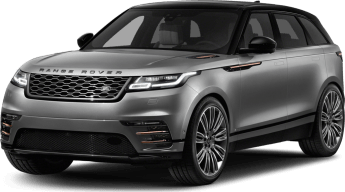
How practical is the space inside?
8 / 10
How many seats? It's a good question. Like its under-the-skin sibling the Jaguar F-Pace, the Velar looks like it could easily swallow seven people with a third-row seat, but alas no such luck. It's five seats or bust.
Front and rear legroom are excellent, courtesy of very generous interior dimensions. It feels bigger in comparison to the F-Pace.
Front and rear passengers are each treated to a pair of cupholders for a total of four. There are four bottle holders, various 12-volt power points and several USB ports.
Starting with an impressive 673 litres of boot space, put the seats down and you'll have 1731 litres of cargo capacity. And that's before you fit a roof rack or roof box to the rails.
What are the key stats for the engine and transmission?
8 / 10
I hope you've caught your breath from the spec lists because there are more engine specs in the Velar range than there are hangers-on at an awards party.
Each has a number that doesn't denote engine size but metric horsepower. The P tells you it's a petrol and the D a turbo-diesel. There is no manual transmission available, just the always-excellent eight-speed automatic from ZF.
.jpeg)
JLR's 2.0-litre four-cylinder 'Ingenium' range underpins the Velar's powertrains and are available in petrol or diesel with single or twin turbos. Of course, being a Range Rover, four-wheel drive is standard across the range.
The first of the diesels is the D180, developing 132kW/430Nm. The D240 offers 177kW/500Nm, the increased power made available with the addition of a second turbo.
Switching to petrol, the 2.0-litre P250 spins up 184kW/365Nm. The P300 punches out 221kW/400Nm, courtesy of an extra turbo and a more advanced electro-hydraulic valvetrain.
The D275 is first in the not-long-for-this-world 3.0-litre diesel V6 range, with 202kW/625Nm while the D300 gives you 221kW/700Nm.
Moving back to petrol and the also-about-to-be-pensioned 3.0-litre supercharged V6 petrol P340 sends 250kW/450Nm and the P380 280kW/450Nm.
Performance figures start at a respectable 8.9 seconds for the sprint from 0-100km/h in the D180, down to 5.4 seconds for the P380, which is a reasonable turn of speed for a car of this size and weight.
Towards the end of the year you'll be able to buy a Velar with one of the world's most pleasantly obnoxious engines, JLR's delicious supercharged V8. If you want a quick 0-100 acceleration time, that's the one you want.
.jpeg)
All Velars come with a single-speed transfer box, Land Rover's 'Terrain Response' system and various off-roadey goodness like hill-descent control. On-road fun is helped along by a torque-vectoring system using the brakes.
Towing capacity varies between the models, so you'll need to check with your dealer. Unsurprisingly, a towbar is an option.
Given Land Rover's commitment to electrification, a plug-in hybrid can't be far away.
How much fuel does it consume?
8 / 10
Obviously, "your mileage may vary" is an understatement when it comes to the Velar's fuel consumption.
Diesel fuel economy, as you might expect, wins out in the numbers game. The D180's official rating starts at 5.9L/100km (157g/km) and the D240's is 6.5L/100km (171g/km). The 3.0-litre V6 brings a small increase to 6.6L/100km in the D275 and the D300.
The P250 four-cylinder petrol will return (in the lab, at least) 7.6L/100km (173g/km) and the P300 7.8L/100km (178g/km). Moving on to the petrol V6s, Range Rover says both the P340 and P380 will return 9.4L/100m (214g/km). The V6's fate was sealed early in 2019 with the announcement of the company's Ingenium straight-six engines.
Fuel-tank capacity also varies between the models, from 60 litres in the D180 to 66 litres in the D300 vs the petrol cars' uniform 82-litre tanks.
Warranty & Safety Rating
What safety equipment is fitted? What safety rating?
8 / 10
The Velar ships with six airbags, ABS, stability and traction controls, tyre-pressure monitoring, reversing camera, lane-keep assist, forward AEB with pedestrian avoidance, and lane-departure warning.
Traffic-sign recognition is available on all but the base car, with or without R-Dynamic.
Blind-spot monitoring, high-speed AEB, and reverse cross traffic alert are part of a safety pack and standard on the HSE.
The Velar scored a maximum five-star ANCAP safety rating in September 2017.
There are also three top-tether anchor points and two ISOFIX points.
What does it cost to own? What warranty is offered?
7 / 10
The Range Rover warranty is an increasingly isolated three-year/100,000km warranty, although oddly premium brands are sticking with this sort of package. Three years' roadside assist helps sweeten the deal.
You can control the car's service cost with a service plan. This varies between engine specs, with the 2.0-litre petrol starting at $1500 for five years/130,000km.
The 2.0-litre diesel will sting you for the same money but only 102,000km. The supercharged V6 petrol ($1800) and V6 turbo-diesel ($2200) both go for up to 130,000km. This seems like good value.
The owner's manual will tell you when a service is due, as will the onboard computer. The manual will also tell you things like where the battery is, top speed and tyre pressures.
The Velar hasn't been around very long so common reliability issues, problems and faults are hard to pinpoint. For the same reason, resale value is difficult to assess. The waiting time for a new Velar is dependent on how weird a combination of options you choose.
What's it like to drive?
8 / 10
Given how many engine options are available, it's hard to give you a definitive answer. I can tell you that the R-Dynamic SE P250 is a fine car, though. Loaded with options as it was, it was one of the most refined SUVs I've ever driven. The P250 is an unstressed sounding engine, the Velar sailing along happily on a wave of torque.
.jpeg)
On air suspension, the Velar remains unruffled by lumps and bumps but has a weird habit of getting a bit floaty when not in Dynamic mode. It's not unpleasant, it's just weird.
One thing I really liked about the Velar was the steering. I was expecting an isolating set-up, but it had good feel and sensible weighting. The variable rack means that Range Rover's engineers didn't sacrifice road responsiveness for off-road usability. A run in a Range Rover PHEV a couple of weeks before had probably polluted my thinking.
This isn't a review of the Velar's off-road capability but a) it's a Range Rover and b) the fundamentals look good. Coil-sprung cars have a wading depth of 600mm and obstacle clearance of 213mm.
Add air suspension to your Velar and you can wade up to 650mm and obstacle clearance increases to 251. Ground clearance is listed at 165mm.
So, fundamentally, it's as smooth and stylish to drive as it is to look at, and feels better than the last F-Pace I drove.
Verdict
When you've got 50-something models to choose from, it's very difficult to suggest - or even guess - at the sweet spot in such a large range. The P250 is a fine start and the R-Dynamic additions made it a lovely car for a fair chunk under $100,000. That's a lot of money, but not by Range Rover standards.
There are some frustrating exclusions both at the bottom end (no sat nav or Apple CarPlay/Android Auto in the base Velar?) and reverse cross traffic alert in most of them is an option. The list of options is truly dizzying.
If you're not planning anything more difficult than a trip to the snow or the hobby farm, a big-wheeled Velar is going to look and feel great and seems a lot more expensive than it is. Even better, it drives well and feels a million bucks in the right spec.
Is the Velar the car to take on the German SUV coupes? Tell us what you think in the comments below.
Pricing Guides



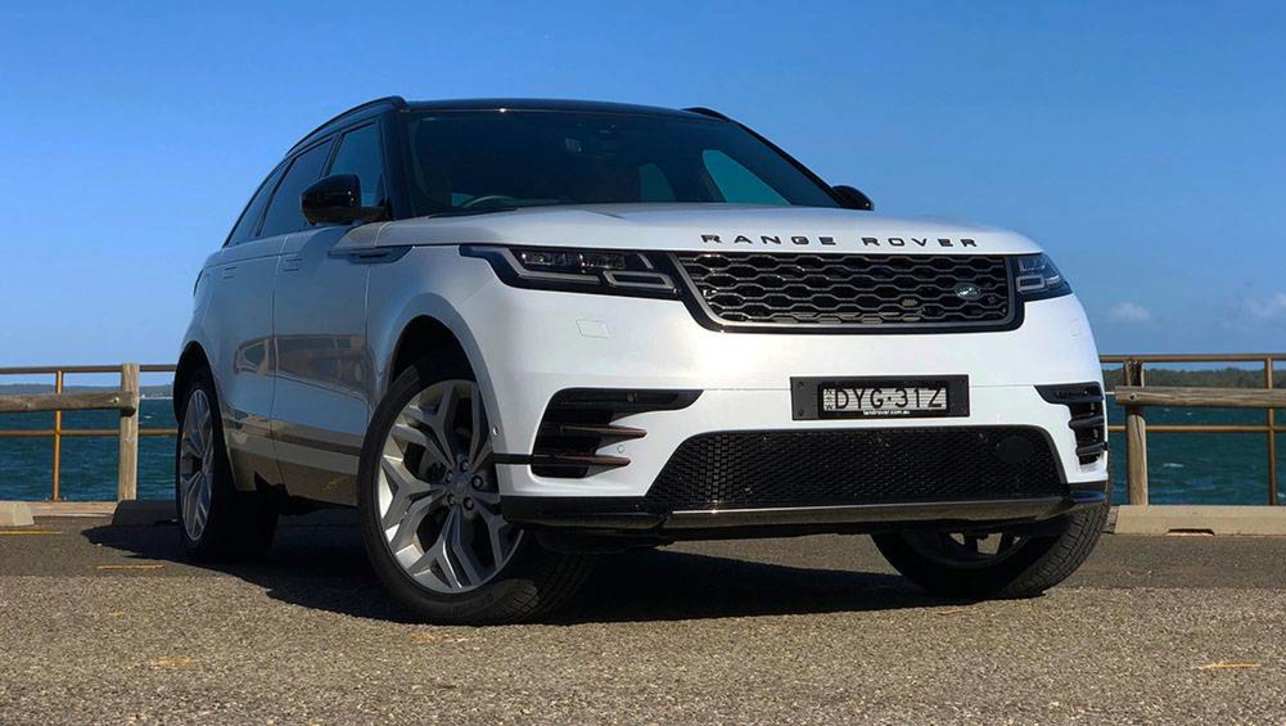

.jpeg)
.jpeg)
.jpeg)
.jpeg)
.jpeg)
.jpeg)
.jpeg)
.jpeg)
.jpg)

.jpg)



















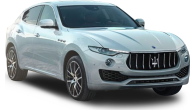


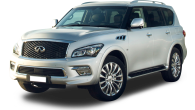




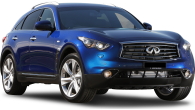




_0.jpg)

.jpg)
-(1).jpg)
.jpg)
.jpg)
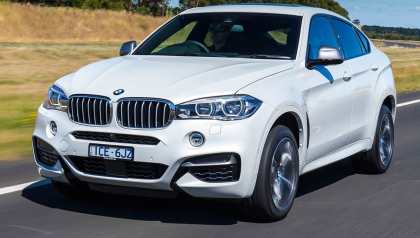
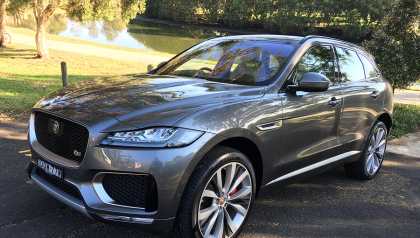

.jpg)
.jpg)
.jpg)
Comments